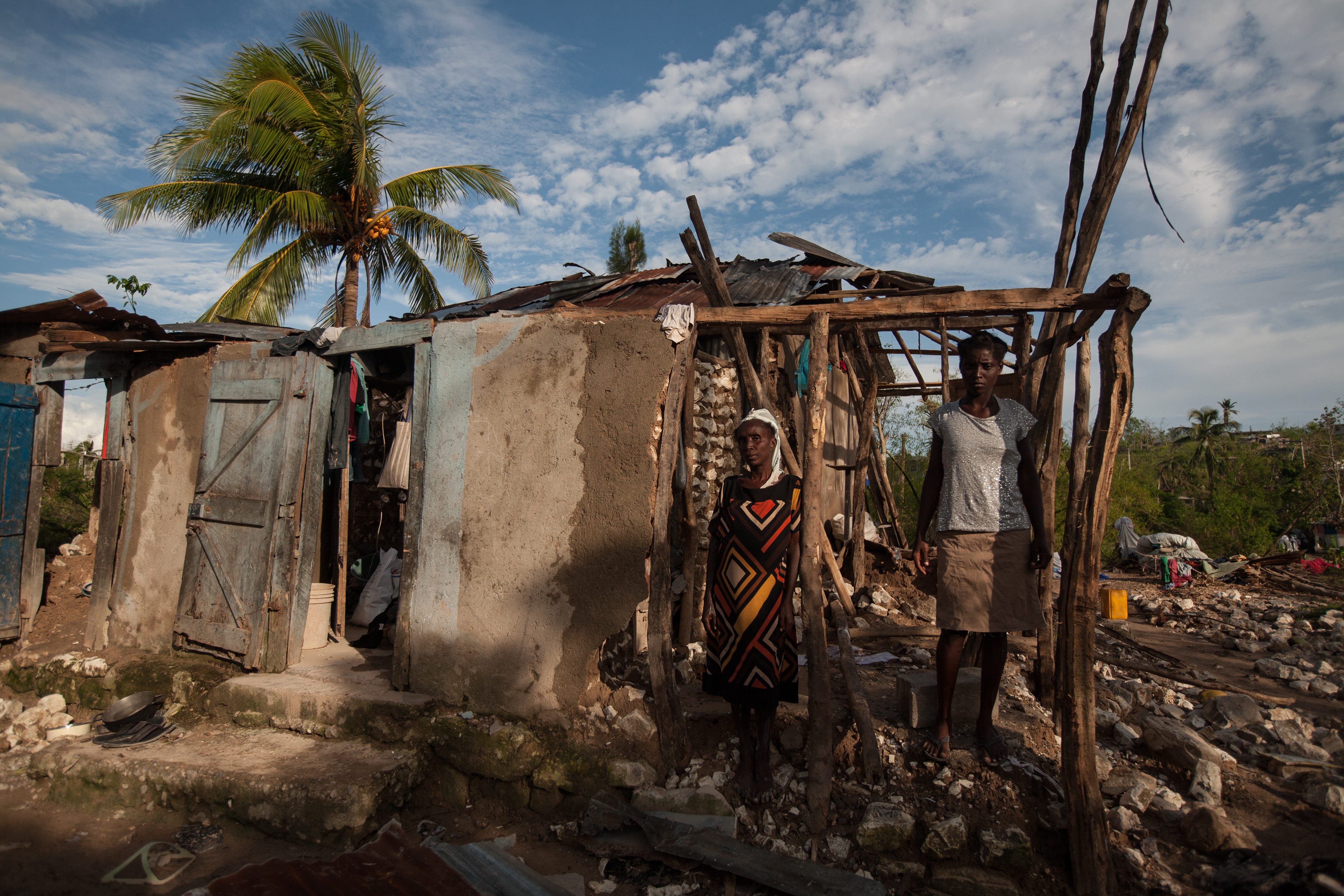
HAITI: Salesian Missions continues emergency fundraising efforts for Haiti, Salesian missionaries continue relief efforts and plan for long-term recovery
NEW ROCHELLE, NY & LES CAYES, HAITI (Oct. 31, 2016) Salesian Missions has sent emergency aid funds and continues its fundraising efforts in response to the devastating hurricane that struck Haiti on Oct. 4. The funds sent as part of its Haiti Relief Fund, which supports the ongoing relief efforts lead by Salesian missionaries in Haiti. They are continuing their relief efforts and planning for long-term recovery projects. Salesian Missions, the U.S. development arm of the Salesians of Don Bosco, joins other Salesian NGOs around the world with this emergency fundraising effort.
Because Salesian missionaries live and work in the communities they serve, they were able to respond immediately once they were cleared by the Haitian government to do so. By combining their unique knowledge of how to get things done locally with already-established infrastructure and logistical capabilities (like storage warehouses, transportation vehicles, and distribution channels), Salesian missionaries are able to respond quickly and effectively.
They were there long before the 2010 earthquake struck, and they remained there after—working on reconstruction efforts while continuing to provide education and meals to some of the country’s most vulnerable children. While other development NGOs came and went (along with the news cameras), Salesian missionaries remained. This is why their communities turn to them during times of need such as natural disasters.
Salesian schools and programs are located throughout Haiti and—including Port-au-Prince, Fort-Liberté, Cap Haïtien, Les Cayes, and Gressier. With an established presence throughout the country, the emergency response has been efficient and comprehensive. A warehouse that was built using funds raised by Salesian Missions (after the 2010 earthquake) has been utilized as a staging ground where missionaries and other volunteers assemble survival kits for distribution. In addition, a delivery truck, also funded by Salesian Missions, is making the transport to Les Cayes possible. The town—which is located in the area hardest hit by the hurricane—is home to Salesian schools and programs for the poor.
The peaceful distribution of “emergency relief kits” has been taking place at a Salesian church in Les Cayes. The Salesian-run Rinaldi Foundation of Haiti, which has been heading up the Salesian response to the hurricane, sent a delegation to the south of the country to assess the damage caused by the hurricane and distribute the emergency aid.
Each kit is able to sustain five people for four days and contained rice, beans, salmon, sugar, olive oil, and milk. Salesian missionaries have also been providing clean water and soap to prevent the spread of cholera, which has already killed 13 and sickened 62 more people. The concern is with the lack of available water and proper sanitation, there will be another deadly outbreak of cholera.
Salesian missionaries are also looking to reconstruction efforts with the Rinaldi Foundation preparing the distribution of building materials for those affected so that they can repair their homes or rebuild them. Missionaries are also planning to start distributing seeds and agricultural tools to those who lost their crops and with them their livelihood. About 500 farmers will benefit from this project, which will also allow the resumption of economic activities in selected areas.
With an eye on long-term sustainability and ensuring reconstruction efforts in local communities, the Rinaldi Foundation is also planning an education project that will provide intensive training for 300 youth in the construction industry including courses in metallurgy, carpentry, and welding. Students who might not otherwise be able to continue their studies will also be able to access scholarships.
“Salesian missionaries are helping those in need with the distribution of food and water kits, but this phase should not last long. The second phase is the creation of a canteen to provide warm meals for all, but especially for the children and young people who access our programs,” says Father Jean Paul Mesidor, Superior of the Salesians of Haiti. “A third step will be to provide working tools to people so that they may begin to till their land so that the food source will remain accessible. Lastly, but most important, we will provide construction materials and offer education so people can get back to work reviving their own livelihood and rebuilding their communities.”
Slamming into the southern part of the island on Oct. 4 with wind speeds of up to 145 miles per hour, Hurricane Matthew ripped tin roofs from the fragile makeshift shelters in which tens of thousands of people had been living since the earthquake. Vulnerable to the storm’s fury, more than 1,000 people are confirmed dead. Roads and bridges collapsed, and communications systems failed—stranding victims from critical aid. The storm surge flooded entire farmlands, destroying up to 80 percent of food crops and killing significant numbers of livestock. Mudslides have clogged wells and sanitation systems. More than 50,000 people are now homeless, with food and safe drinking water desperately scarce.
The need is great, and time is of the essence. This is why Salesian Missions, along with other Salesian NGOs around the globe, has launched an emergency fundraising drive. Those who want to help victims of Hurricane Matthew are urged to make a donation online at www.salesianmissions.org/give.
###
SPECIAL NOTE TO MEDIA: Photos available, contact [email protected].
Sources:
ANS – Haiti – After Hurricane Matthew: New Forms of Solidarity
ANS – Haiti – Salesians continue to distribute aid and are already planning on rebuilding
